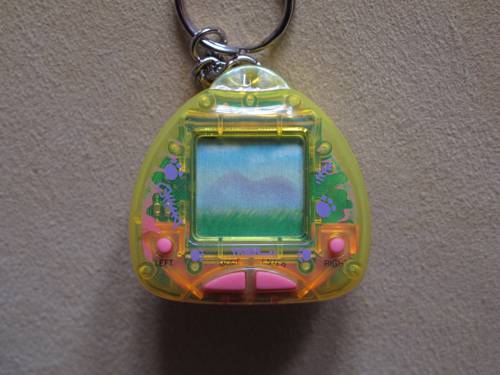
FAQ About The Influence of Virtual Pets in Digital Culture

What are virtual pets?
Virtual pets are digital representations of animals or mythical creatures that users can maintain and interact with using electronic devices. They often require feeding, grooming, and nurturing much like physical pets. Virtual pets were popularized by devices like the Tamagotchi and now appear in various forms across video games, apps, and online communities.

How have virtual pets influenced game mechanics?
Virtual pets have significantly influenced game mechanics by introducing concepts such as resource management, caregiving, and progression systems. These mechanics require players to regularly interact with the game to tend to their virtual pet's needs. This has led to the development of more complex life simulation and role-playing games where caregiving plays a crucial role.

What role do virtual pets play in social media interaction?
In social media, virtual pets can facilitate interaction by serving as avatars, encouraging sharing and collaboration, and creating communities of interest. Apps and platforms may allow users to showcase achievements related to virtual pets, participate in events, and engage in competitions, thus enhancing social connectivity and engagement.

How have virtual pets evolved over time?
Virtual pets have evolved from simple, pixelated creatures on standalone devices to complex, interactive beings in online games and augmented reality environments. Advances in technology have introduced 3D graphics, artificial intelligence, and network connectivity, enabling pets to learn and adapt based on user interaction while being part of a larger digital community.

What is the relationship between virtual pets and virtual reality development?
Virtual pets have been an integral part of virtual reality (VR) development as they provide users with interactive companions in immersive environments. VR allows for a heightened sense of presence and emotional connection with virtual pets, enhancing user experience and driving further innovation in both pet AI and VR interaction techniques.

Can virtual pets impact mental health?
Virtual pets can have positive effects on mental health by providing companionship, reducing feelings of loneliness, and enhancing mood. They can also teach responsibility and foster routine, serving as tools for stress relief. However, excessive use might contribute to screen addiction and reduce social interaction in the physical world. Balance and moderation are key.

Are virtual pets popular among all age groups?
While virtual pets primarily attract younger audiences, particularly children and teens, they also have nostalgic appeal for adults who enjoyed them as children. Innovations in mobile apps and social media have helped sustain their popularity across different age groups, making them accessible and appealing to a broader demographic.

What are some of the most popular virtual pet games?
Some of the most popular virtual pet games include the classics such as Tamagotchi and Neopets, as well as modern games like Pokémon GO, Animal Crossing: New Horizons, and apps like Neko Atsume. These games vary widely in terms of gameplay complexity, graphics, and interaction possibilities.

How do virtual pets encourage creativity?
Virtual pets encourage creativity by allowing users to personalize their pets, designing habitats, and engaging in storytelling. Platforms often provide users with a wide range of customization options and challenges that inspire imaginative play and creative problem-solving.

Do virtual pets have educational value?
Yes, virtual pets can have educational value. They teach basic responsibilities such as routine care, time management, and empathy for other beings. Educational virtual pet games often incorporate elements like math, reading, and science, helping children learn while playing.

What technological advancements have most impacted virtual pet development?
Technological advancements such as improved graphics processing, artificial intelligence, and mobile connectivity have greatly impacted virtual pet development. These advancements enable more complex behaviors, realistic interactions, and seamless integration with other digital platforms, enhancing the user experience.

Can virtual pets be integrated into physical products?
Yes, virtual pets can be and have been integrated into physical products, such as smart toys and wearable technology. This integration allows for physical interaction with virtual elements through augmented reality, providing an enriched interactive experience that merges the digital and physical worlds.

How do augmented reality (AR) features enhance the virtual pet experience?
AR features enhance the virtual pet experience by allowing pets to be projected into the real world, interacting with the environment and users in dynamic ways. This technology provides an immersive experience, making it more engaging and emotionally resonant by blending digital elements with the real world seamlessly.

What are the common platforms for hosting virtual pets today?
Virtual pets today are commonly hosted on mobile apps, online platforms, and social media networks. Additionally, console and PC games incorporate virtual pet features, and with the rise of AR and VR technologies, they are being integrated into augmented and virtual reality devices.

How do virtual pets foster community engagement?
Virtual pets foster community engagement by acting as focal points for shared interest, leading to the creation of user forums, social media groups, and online competitions. These communities encourage interaction, cooperation, and the exchange of ideas among users, thereby strengthening social bonds.

What were some early influences on the development of virtual pets?
Early influences on the development of virtual pets include traditional pet care and companionship concepts, coupled with the rise of handheld electronics. The proliferation of gadgets like the Tamagotchi and Pocket Pikachu set the stage for more advanced digital pet concepts by combining existing technology with the intrinsic human desire for companionship.

How do virtual pets differ from digital avatars?
Virtual pets differ from digital avatars in that they are typically designed as companions needing care and interaction from the user, whereas avatars are representations of the user meant to navigate digital spaces. Virtual pets often have autonomous behaviors and needs, requiring more active management from users compared to avatars.

What ethical considerations are associated with virtual pets?
Ethical considerations with virtual pets involve the potential for addiction, privacy concerns related to data usage, and the blurring of lines between virtual and real-world obligations. Developers must balance engaging gameplay with healthy usage patterns, ensuring users' digital experiences are safe and responsible.

How do virtual pets facilitate emotional development in children?
Virtual pets can aid in children's emotional development by teaching empathy, patience, and responsibility. By caring for their digital pets, children learn about consequences and the value of nurturing relationships, which are essential emotional skills.

Why do virtual pets evoke nostalgia for some users?
Virtual pets evoke nostalgia because they remind users of earlier times when these digital companions were a significant part of childhood. Devices like the Tamagotchi represent a simpler era of technology, and the fond memories associated with these experiences foster a strong emotional connection, leading to a resurgence in popularity among older audiences.
